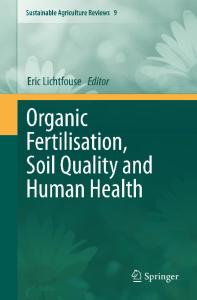PGE in Road Dust/Top Soil from Major Indian Cities: Implications on Human Health and Environment
Platinum group elements (PGE) especially Pt, Pd, Rh and other toxic metal levels emitted from automobile catalytic converters in road dusts collected from Bangalore and Hyderabad cities of India were assessed in the context of accumulation and resultant r
- PDF / 938,853 Bytes
- 23 Pages / 439.37 x 666.142 pts Page_size
- 74 Downloads / 334 Views
PGE in Road Dust/Top Soil from Major Indian Cities: Implications on Human Health and Environment V. Balaram, C.T. Kamala, Ramavathi Mathur, A. Sreenivasa Rao, and M. Satyanarayanan
Abstract Platinum group elements (PGE) especially Pt, Pd, Rh and other toxic metal levels emitted from automobile catalytic converters in road dusts collected from Bangalore and Hyderabad cities of India were assessed in the context of accumulation and resultant risks on human health and ecology. Apart from road dusts, Respirable particulate matter (RSPM) samples of Bangalore city were collected and studied. Samples were analyzed by ICP-MS following pre-concentration by NiS-fire assay and Te co-precipitation for road dusts and acid leaching procedure for the RSPM filters. It is inferred from the results that the trace element concentrations in RSPM and surface road dust samples of Bangalore city depend on the traffic density and season. The maximum concentrations of Pt, Pd and Rh for RSPM samples followed a decreasing order: Pt (163 ng/m3) > Pd (41.8 ng/m3) > Rh (9 ng/m3). In general, the maximum concentration of trace elements in RSPM samples follows a decreasing order: Fe > Mn > Cu > Cr > Ni > Pb > As > Mo > Co > V > Cd. The maximum concentration of PGE in road dusts also follows a decreasing order: Pt (27.4 μg/kg), Pd (25.4 μg/kg) and Rh (10.8 μg/kg). The trace elemental distribution in road dusts is decreasing in the order: Zn > Ni > Cu > Pb > Cr > V > Th > Co. The results obtained for Hyderabad city show a similar status: Pt (1.5–43 ng/g), Pd (1.2–58 ng/g) and Rh (0.2–14.2 ng/g). The concentrations are above upper crust values, but are lower than several other cities around the World. Dust samples from road junctions and traffic signals with heavy and erratic traffic flow showed higher PGE levels than those from roads with low and free flow traffic suggesting that traffic flow conditions greatly influenced emission of PGE from the catalyst. Existences of significant correlations between Pt, Pd and Rh indicate a common source for these metals. PGE were also positively
V. Balaram (*) • C.T. Kamala • R. Mathur • M. Satyanarayanan National Geophysical Research Institute, Hyderabad 500 007, India e-mail: [email protected] A.S. Rao Department of Biotechnology, PES Institute of Technology, Bangalore 560085, India Mu. Ramkumar (ed.), On a Sustainable Future of the Earth’s Natural Resources, Springer Earth System Sciences, DOI 10.1007/978-3-642-32917-3_4, # Springer-Verlag Berlin Heidelberg 2013
85
86
V. Balaram et al.
correlated with Ce, Zr, Hf and Y. These positive inter-element correlations identified traffic as the main source of PGE emission to the roadway environment. These inferences indicate to an appreciable increase in auto catalyst-derived PGE in both the cities. Owing to the adverse health and ecological risk potential of PGE, monitoring their level and transformation paths are necessary.
4.1
Introduction
Concentrations of PGE and other trace elements in different urban city environments in the World have been incre
Data Loading...











